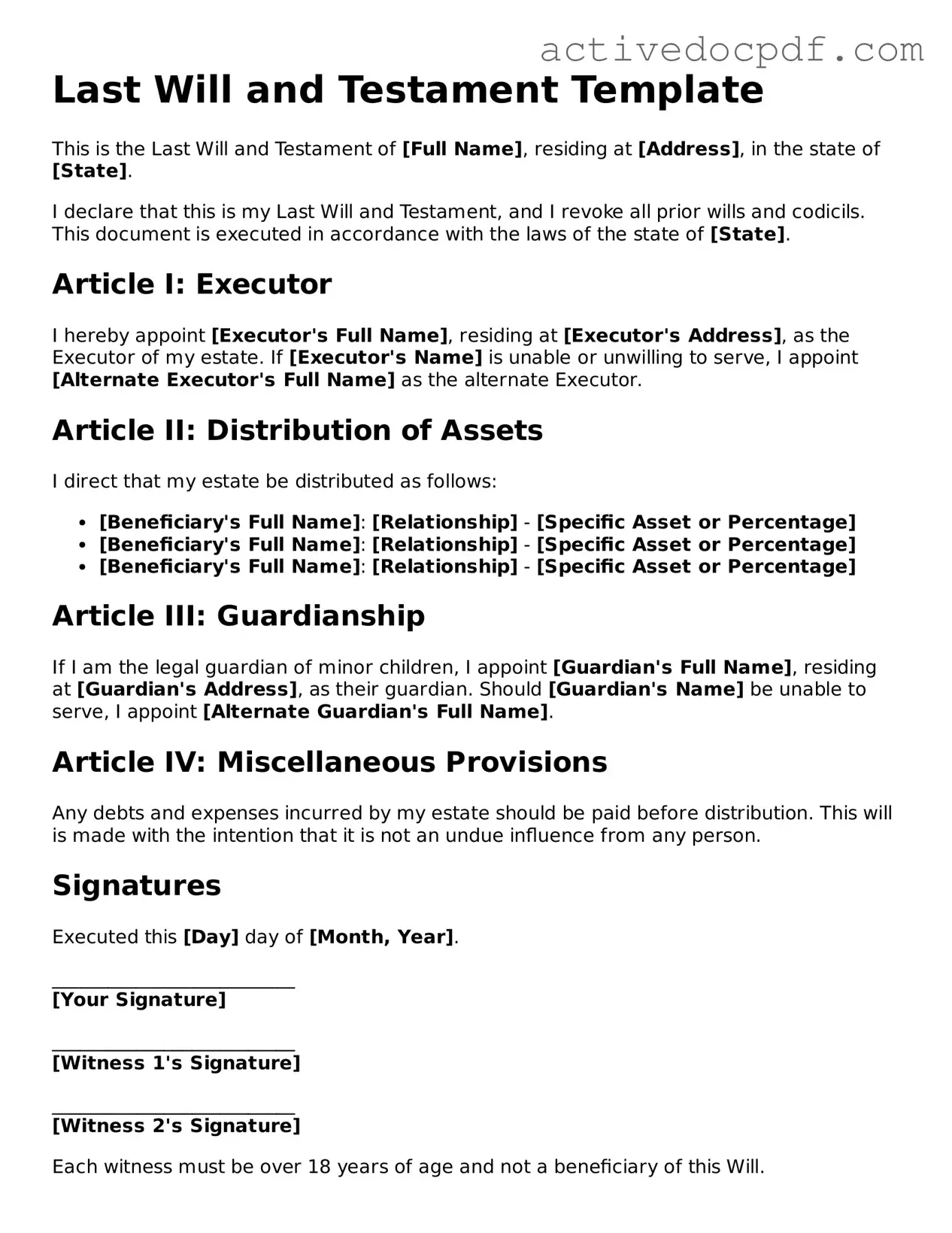What is a Last Will and Testament?
A Last Will and Testament is a legal document that outlines how a person's assets and affairs should be handled after their death. It allows individuals to specify who will inherit their property, appoint guardians for minor children, and designate an executor to manage the estate. This document is essential for ensuring that a person's wishes are followed and can help avoid disputes among family members.
Why is it important to have a Last Will and Testament?
Having a Last Will and Testament is crucial for several reasons:
-
It ensures that your assets are distributed according to your wishes.
-
It allows you to name guardians for your children, ensuring they are cared for by someone you trust.
-
It can simplify the probate process, making it easier for your loved ones to settle your estate.
-
It helps prevent family disputes over your estate, as your intentions are clearly documented.
Who can create a Last Will and Testament?
Generally, any adult who is of sound mind can create a Last Will and Testament. This means you should be at least 18 years old and capable of understanding the implications of your decisions. Additionally, you should not be under undue influence or pressure from others when making your will.
What should be included in a Last Will and Testament?
A comprehensive Last Will and Testament typically includes the following elements:
-
Your personal information, including your full name and address.
-
A statement revoking any previous wills.
-
Designation of an executor to carry out your wishes.
-
Specific bequests, detailing who receives particular items or amounts of money.
-
Instructions for the distribution of your remaining assets.
-
Appointment of guardians for minor children, if applicable.
-
Your signature and the signatures of witnesses, if required by state law.
How do I make my Last Will and Testament legally binding?
To make your Last Will and Testament legally binding, you must follow your state’s specific requirements. Generally, this involves:
-
Writing the will in a clear and organized manner.
-
Signing the will in the presence of at least two witnesses.
-
Ensuring that the witnesses are not beneficiaries of the will.
-
Having the will notarized, if required by your state.
Can I change my Last Will and Testament after it is created?
Yes, you can change your Last Will and Testament at any time as long as you are of sound mind. This can be done by creating a new will or by adding a codicil, which is an amendment to the existing will. It’s important to follow the same legal requirements for signing and witnessing when making changes to ensure the updated document is valid.
What happens if I die without a Last Will and Testament?
If you die without a Last Will and Testament, you are considered to have died "intestate." In this case, your assets will be distributed according to your state’s intestacy laws. These laws typically dictate that your assets will go to your closest relatives, which may not align with your wishes. This can lead to complications and disputes among family members.
How often should I review my Last Will and Testament?
It is advisable to review your Last Will and Testament every few years or after significant life events. Events such as marriage, divorce, the birth of a child, or the death of a beneficiary can all impact your wishes. Regular reviews ensure that your will accurately reflects your current circumstances and intentions.
Can I write my Last Will and Testament myself?
While it is possible to write your Last Will and Testament yourself, it is often recommended to seek legal assistance. A lawyer can help ensure that the document complies with state laws and accurately reflects your wishes. If you choose to write it yourself, be sure to follow all legal requirements to avoid any issues during probate.
